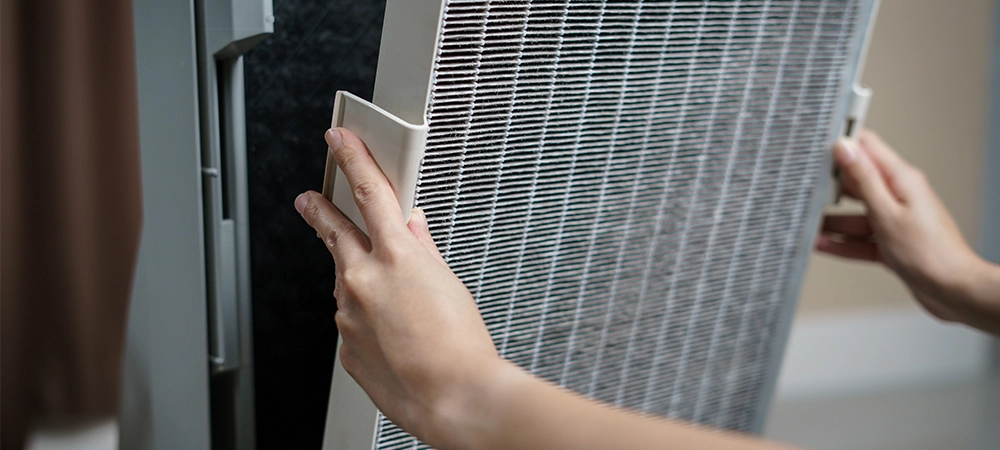Air filtration is a cornerstone of operation in the meticulously controlled environments of cleanrooms. Air filters in cleanrooms aren’t just about maintaining air purity; they protect critical processes and products from microscopic contaminants that can jeopardize entire operations.
From pharmaceuticals to microelectronics, air quality directly impacts the quality of products and research outcomes. At Cantrol Environmental, we recognize the critical role that clean air plays in maintaining the integrity of these specialized spaces.
This comprehensive guide delves into the technology behind cleanroom air filtration. Here, we focus on High-Efficiency Particulate Air (HEPA) and Ultra Low Penetration Air (ULPA) filters and their significance in ensuring air purity.
How Cleanroom Air Filtration Works
Controlling the concentration of airborne particles in cleanrooms is vital for preventing contamination. Air filtration systems effectively remove these particles, ensuring the cleanroom maintains its designated ISO classification.
HEPA Filters in Cleanrooms
HEPA filters are a staple in cleanroom technology, renowned for their ability to trap a high percentage of very small particles.
How HEPA Filters Work
- Filtration Mechanism: HEPA filters comprise a mat of randomly arranged fibres. The fibres’ diameter and the filter’s thickness are the key to their efficiency.
- Particle Capture: These filters work through a combination of mechanisms, including interception, impaction, and diffusion, effectively capturing particles as small as 0.3 microns with an efficiency of 99.97%.
Applications of HEPA Filters
HEPA filters are used in various cleanrooms, particularly where particle control at the micron and sub-micron levels is essential. They are standard in many pharmaceutical and biotech cleanrooms and manufacturing environments for sensitive electronics.
Related Article: Difference Between Positive and Negative Air Pressure Cleanrooms
ULPA Filters: Ultra Low Penetration Air
ULPA filters represent a step above HEPA filters in terms of filtration efficiency.
How ULPA Filters Work
- Enhanced Filtration: ULPA filters operate on similar principles to HEPA filters but trap even smaller particles. They can capture particles as small as 0.12 microns with an efficiency of up to 99.9995%.
- Construction and Material: Like HEPA, ULPA filters are made from a dense mat of fibres, but they typically have a higher density of fibres and a lower air flow rate.
Applications of ULPA Filters
ULPA filters are used in environments requiring the utmost level of air purity. This includes microelectronics manufacturing, where even the smallest particle can disrupt the fabrication of microchips. You can also find ULPA filters in certain pharmaceutical and biotechnological applications where sterility is paramount.

The Importance of Choosing the Right Air Filter for a Cleanroom and Adequate Maintenance
Choosing the right cleanroom air filter is a decision that impacts the entire operation.
Selection Criteria
- Cleanroom Classification: The choice between HEPA and ULPA filters often depends on the cleanroom’s ISO classification and the specific requirements of the process conducted within it.
- Airflow Requirements: The selection also depends on the airflow requirements of the cleanroom, as ULPA filters typically reduce airflow due to their denser construction.
Maintenance and Replacement
- Regular Testing and Replacement: To ensure ongoing efficiency, it’s crucial to regularly test and replace air filters as part of cleanroom maintenance.
- Monitoring Pressure Drop: A significant indicator of filter performance is the pressure drop across the filter. An increase in pressure drop may indicate filter loading and the need for replacement.
Advancements in filtration technology and materials science continue to enhance the capabilities of HEPA and ULPA filters. Innovations may include increased energy efficiency, reduced operating costs, and improved contamination control.
Related Article: Maintaining a Cleanroom: Best Practices and Protocols
Cleanrooms From Can-trol Environmental Systems
In summary, HEPA and ULPA filters are foundational elements of cleanroom air filtration, offering unparalleled efficiency in particle removal. Their correct selection, installation, and maintenance are critical for the optimal functioning of cleanrooms across various industries.
At Can-trol Environmental Systems, we emphasize the importance of these filtration systems in our cleanroom solutions. We ensure that you operate in environments where air purity is maintained to the highest standards.
Contact us today at 905-415-8141 for your cleanrooms, cold rooms and stability chambers.
